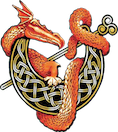Misconceptions About Dragon BoatingBy Chin “Coach” Waihong |
 |
|
Strength endurance
Strength and endurance are at the spectrum of the strength-endurance continuum. Lifting heavy weights for lower repetitions lead to greater gains in strength while lifting light weights for higher repetitions lead to greater gains in endurance.
The main difference between endurance and strength is that people with strength are better at producing force in a single effort while people with endurance are better at producing force repeatedly. While strength training works the anaerobic system, endurance training works the aerobic system.
There are many who do better in strength training. Meaning they can lift heavy weights if they get ample rest between sets, or during the set itself. When needed to lift heavy weights repetitively beyond the time frame of a set or reduce the accustomed rest time, their strength won’t hold up.
So what is strength endurance?
|
| Strength to weight ratio (SWR)
Very often when mentioned swr, we will calculate the number of reps that we can lift till failure base on our body weight. For example, a 70kg man can do 5 reps of 70kg squats has a swr of 5:1. This is the simplest form of calculation for paddlers.
The actual way to calculate swr is by dividing your strength (amount of weight you can lift for 1 repetition maximum with proper form) by your body weight. For example, a 70kg man can squat 100kg has a swr of 1.4 (100kg/70kg).
To obtain the most accurate total body swr, one needs to perform 3 different movements; squat, deadlift and bench press. Calculate the swr of each movement, then divide by 3. For example, the swr of each movements are 1.3, 1.4, and 1. Adding them up and dividing it by 3 will give you a total body swr of 1.2.
It’s important for paddlers to know their swr of each movement as it is a good indicator of muscle imbalance. Thereafter, training emphasis will have to be adjusted to suit the individual. |
| Flexibility vs mobility A person with good mobility is able to perform functional movements with no restriction in range of motion. A person with good flexibility will have a full range of motion but may not have the core strength, balance and coordination to perform a functional movement. Simply put, mobility is the movement of the joints, and flexibility lies in the length of muscle. Mobility can be affected by various factors. Flexibility is an important component in mobility because it’s difficult to move a joint if the connecting muscles are too tight or short.
Other common considerations that lead to low mobility are inadequate strength to perform the movement, soft tissue damage or other joint problems affecting the particular joint that is needed in the same chain of joint movement. Hence, having good flexibility does not mean better mobility as mobility can be constricted by other factors as well.
People often use supports or guards to facilitate strength exertion. Supports and guards are meant for prevention and not correction of a faulty movement. Using them for corrective purposes will prevent the joint to work, balance and absorb like it’s supposed to. In time, this will lead to other joint problem or muscle imbalance as it is compensating it’s deficiency with other connecting muscles or joints in the same chain of joint movement. In dragonboat, should you have a shoulder problem thats not fixed, and you use more of your arms to exert strength to compensate, there may be a possibility of it implicating the elbow and wrist. Similarly, if use more of your back to compensate for your shoulder, you may implicate upwards to the traps, lats or rhomboids.
Simple mobility issues can be fixed by stretching, mobility drills, myofascial release (foam rolling and trigger ball), strength and conditioning.
These are the few things that we’ll be working on next year. So come for training regularly!
Cheers, |







Leave a Reply